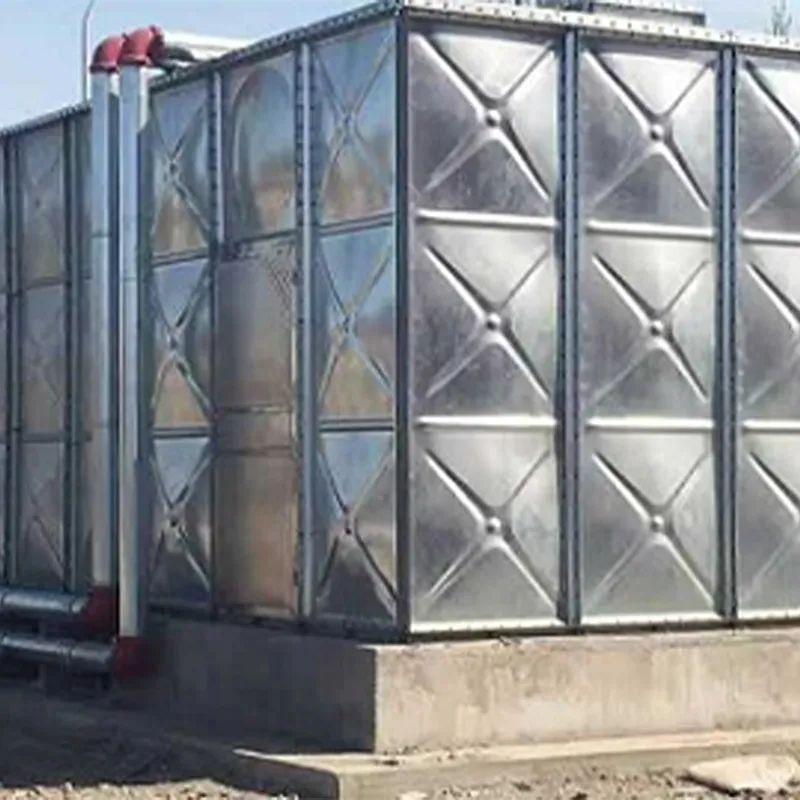loading...
- No. 9, Xingyuan South Street, Dongwaihuan Road, Zaoqiang County, Hengshui, Hebei, China
- admin@zjcomposites.com
- +86 15097380338
- Welcome to visit our website!
Innovative Applications of Glass Fiber Reinforced Polymer Rebar in Modern Construction Techniques
Glass Fiber Reinforced Polymer (GFRP) Rebar A Revolution in Construction Materials
In recent years, the construction industry has witnessed a remarkable evolution in building materials, with Glass Fiber Reinforced Polymer (GFRP) rebar emerging as a game-changer. GFRP rebar is a composite material made from glass fibers and a polymer resin, typically epoxy, which results in a product that offers numerous advantages over traditional steel reinforcement bars.
Properties and Composition
GFRP rebar is composed of a high-strength glass fiber that provides exceptional tensile strength while being lightweight. Its polymer matrix protects the glass fibers from environmental degradation and moisture, making GFRP inherently resistant to corrosion. This characteristic is particularly beneficial in infrastructure projects where rebar is exposed to harsh conditions, such as marine environments, chemical plants, and roadways subjected to de-icing salts.
Unlike steel rebar, GFRP rebar is non-metallic and non-conductive, which reduces the risk of electrical corrosion. This property makes it a suitable choice for various applications, including bridges, tunnels, and wastewater treatment facilities.
Advantages of GFRP Rebar
1. Corrosion Resistance The primary advantage of GFRP rebar is its resistance to corrosion. Steel rebar is prone to rusting when exposed to moisture and salts, which can compromise structural integrity over time. In contrast, GFRP rebar remains unaffected by such environmental factors, significantly increasing the lifespan of structures and reducing maintenance costs.
2. Lightweight GFRP rebar is about one-fourth the weight of steel rebar, making it easier to handle and transport. This reduction in weight can lead to lower shipping costs and less labor required on-site, as workers can manage the material more efficiently.
glass fiber reinforced polymer gfrp rebar

3. High Strength-to-Weight Ratio The tensile strength of GFRP rebar is comparable to that of steel, allowing it to carry substantial loads while remaining lightweight. This performance characteristic enables designers to reduce the size and amount of reinforcement required, leading to more economical structures.
4. Non-Magnetic Properties In applications where magnetic fields are a concern, GFRP rebar is an advantageous alternative. Its non-magnetic nature helps to protect sensitive electronic equipment, making it suitable for use in MRI facilities, data centers, and other specialized settings.
5. Design Flexibility GFRP rebar can be manufactured in various shapes and sizes, providing greater architectural flexibility. The ability to craft GFRP rebar to meet specific design requirements allows engineers to explore innovative structural solutions.
Applications in Construction
The versatility of GFRP rebar has led to a broad range of applications in construction. It is increasingly used in various types of structures, including
- Bridges GFRP rebar’s corrosion resistance makes it ideal for bridge decks, particularly in regions that use de-icing salts during winter. - Buildings High-rise buildings and commercial structures benefit from the lightweight nature and high strength of GFRP rebar. - Parking Structures The non-corrosive properties of GFRP rebar are advantageous for parking garages exposed to moisture and chemicals. - Water and Wastewater Treatment Facilities The resistance to chemical attack makes GFRP rebar suitable for tanks, pipelines, and other structures in these facilities.
Conclusion
In summary, Glass Fiber Reinforced Polymer rebar represents a significant advancement in construction materials. Its superior corrosion resistance, lightweight properties, and design flexibility make it an excellent choice for modern construction projects. As the industry continues to evolve, GFRP rebar promises to play a pivotal role in enhancing the durability and sustainability of infrastructure worldwide. As engineers and builders embrace these innovative materials, the future of construction looks brighter than ever.
-
Transform Your Spaces with FRP Grating SolutionsNewsNov.04,2024
-
The Versatility and Strength of FRP RodsNewsNov.04,2024
-
The Excellence of Fiberglass Water TanksNewsNov.04,2024
-
The Benefits of FRP Grating for Your ProjectsNewsNov.04,2024
-
Elevate Your Efficiency with FRP Pressure VesselsNewsNov.04,2024
-
Welcome to the World of FRP Pressure VesselsNewsOct.12,2024
-
Unveiling the Future of Filtration: Why FRP Filter Vessels are a Game ChangerNewsOct.12,2024
